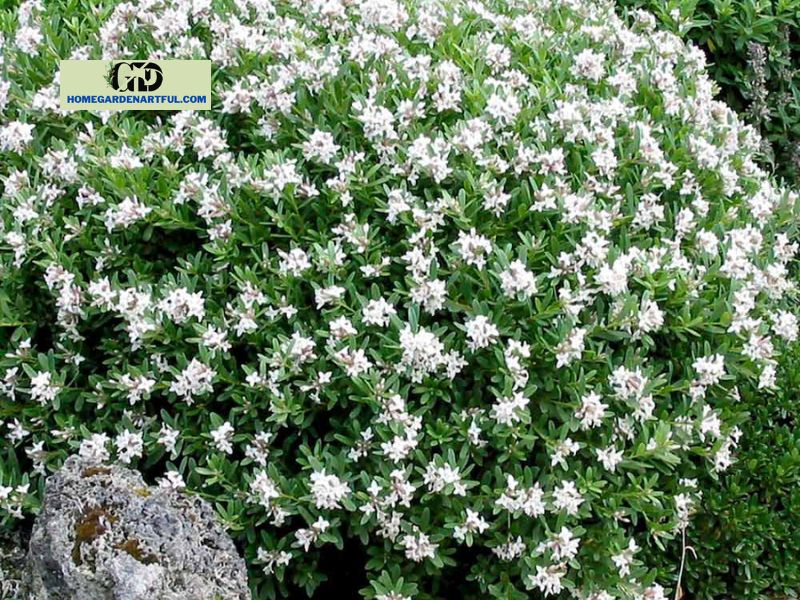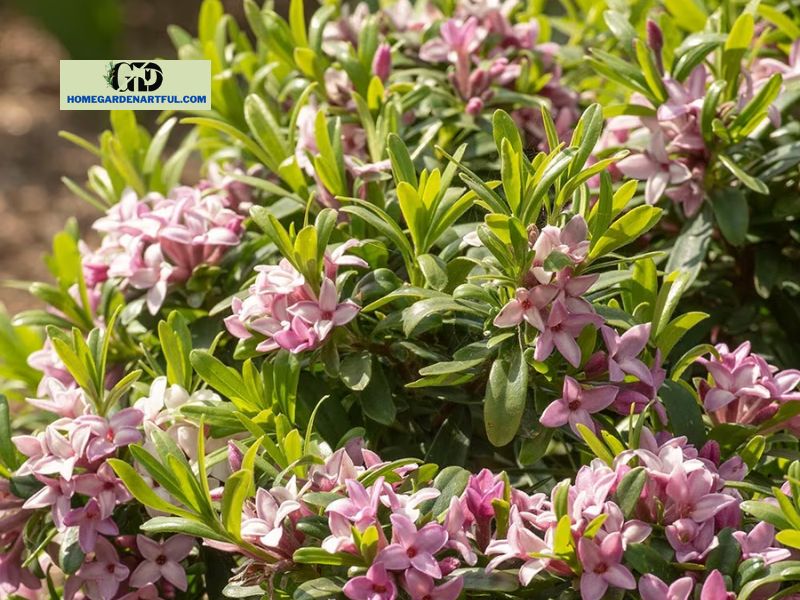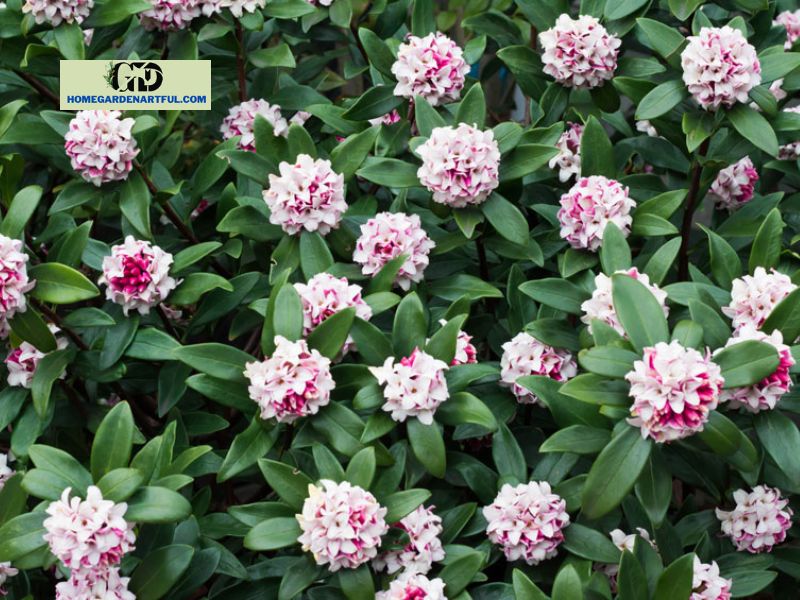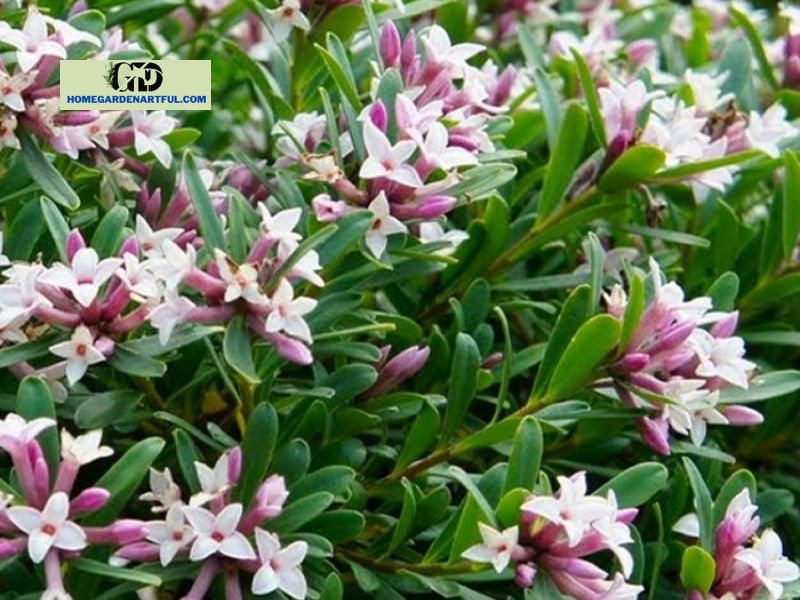Daphne Eternal Fragrance has a reputation for being pricy, temperamental, and slow-growing while also being difficult to grow. Even though they have earned a solid reputation on all three counts, they may still be grown successfully in gardens across the UK if a few simple considerations regarding their needs as evergreen or semi-evergreen plants are made when planting. Discover at homegardenartful.com!
Preferred place
Daphne Eternal Fragrance tends to thrive in either full sun or partial shade. However, Daphne laurel will endure complete shade. It’s possible that D. bholua, D. pontica, and D. odora types thrive in partial shade, especially when their roots are shielded from full sun. Daphnes prefers moist, well-drained soils and abhors wet spots in the yard as well as locations that are excessively dry. Both scenarios could lead to speedy demise since the roots will either rot in the rain or die back during droughts. Watering is crucial during dry spells if your garden is prone to drying out and the soil is thin.
Soil conditions and fertilizer

All varieties of Daphne Eternal Fragrance will grow best in neutral soil that is neither acidic nor alkaline.
The most tolerant of chalk plants is Daphne mezereum. However, D. pontica and D. tangutica require entirely lime-free environments. An upraised bed of adequate soils would be needed if you want to cultivate these.
All daphnes require humus-rich soils, therefore if your soil is sandy or thin, you must amend it before planting with a significant amount of organic matter (well-rotted dung, leaf mold peat, or compost).
Compared to other types, Daphne laureola and D. mezereum may survive heavier, more clay-like soils; however, the key is to have a lot of organic matter in the soil.
Pruning and longevity

There is simply no need to prune daphnes, despite the fact that they are all slow-growing plants (especially the more diminutive varieties ideal for rockeries). Of course, pruning will eliminate the new growths bearing the blooms for the following year. Avoid doing it unless the plant has sustained some sort of physical harm.
The lifespan of D. bholua and D. odora variants is roughly 20 years. Rockery species that develop more slowly may live longer. When daphnes reach the end of their natural existence, they frequently blossom profusely, overgrow, and pass away abruptly. When D. bholua turns up its toes, the twigs and stems may become flattened and subulate.
Hardiness
The majority of daphne species can easily withstand temperatures of minus 10°C and are completely robust in UK circumstances. Varieties of D. bholua are more delicate and presumably only sustain minus 5°C over short periods of time. However, certain varieties of D. bholua can or do lose some or all of their leaves during a cold winter with no long-term negative consequences.
It may be wise to plant D. bholua types in deep pots and bring them inside into the conservatory as well as greenhouse for the winter in colder regions of the country or where your soil is unsuitable for growing daphnes. Certainly, when they flower there from January to March, you will appreciate the aroma more.
Propagation
All daphnes tend to be expensive since they are difficult to grow from cuttings and are typically grafted, usually onto a rootstock of D. tangutica.
Mid- to late summer is a good time to start growing some species from cuttings, especially D. bholua. For this, semi-ripe new growth together with the “heel” where the new growth meets the older stem should be used.
There are other daphne species, but D. mezereum is the one that is most common around Burncoose. Take off the seeds’ fleshy covering and plant them in a potting compost with grit. The optimum places for germination are in the shade or in a cold frame, however, this normally happens only in the second year.
Daphnes can be propagated by layering where their growth habits permit, but it is a time-consuming operation that could take up to three years. Perhaps the simplest species to layer is D. cneorum.
Diseases and pests on Daphne Eternal Fragrance

Daphnes do not have any significant pest issues.
Wilting as well as browning of the leaves or a more widespread yellowing of the leaves are symptoms of the main disease concern. Varieties of D. odora are particularly vulnerable to this.
When a daphne is in this kind of distress, the cause is probably either a lack of nutrients or, possibly, improper application of granular fertilizer, which can have a similar impact. The other factors, as already mentioned, include ground flooding or, conversely, drought.
How to Use Eternal Fragrance Daphne in the Landscape
Plant in prominent locations, where the heady aroma makes a fantastic first impression. Consider having two of them surround your front entrance or creating a little hedge of them down your walkway.
For a sturdy screen, place spaces two feet apart in the middle. You will take measurements starting at the middle of one and moving outward.
Use them as clever foundation plants of the current day. Patios can be adorned with a delightful fresh, fruity-floral fragrance.
Plant them in large quantities on slopes. For a natural, informal look, vary the spacing between two and five feet.
Keep your camera close by wherever you use it to photograph your adorable hummingbird guests. They are adored by helpful pollinators as well.
Try growing them in containers, but only if you add more drainage holes and walkway bark to the mix. They simply won’t stand to sit on soggy ground.
Conclusion
These semi-evergreen, long-blooming bushes have a wonderful smell. You’ll be overjoyed to encounter their allure. Order your premium plant materials today. Order your Eternal Fragrance Daphne immediately to start your love affair.


